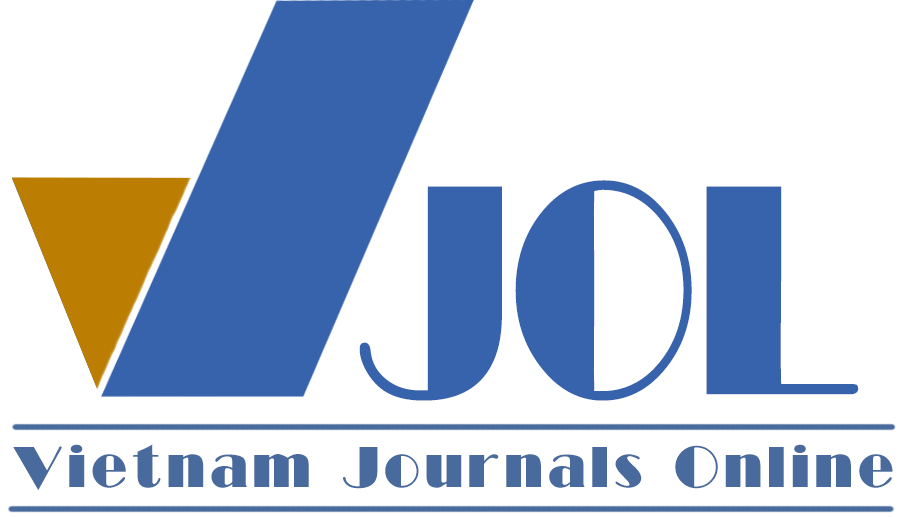Digital orientation, market orientation and innovation capabilities: Evidence from Vietnamese food processing enterprises
Authors
DOI: https://doi.org/10.57110/vnu-jeb.v5i4.331Keywords:
Digital orientation, market orientation, innovation capability, food processing enterprises, VietnamReferences
Akman, G., & Yilmaz, C. (2008). Innovative capability, innovation strategy and market orientation: An empirical analysis in Turkish software industry. International Journal of Innovation Management, 12(1), 69–111. https://doi.org/10.1142/S1363919608001923
Alsadi, A. K., & Aloulou, W. J. (2021). Impacts of strategic orientations on Saudi firm performance: Is supply chain integration a missing link? The International Journal of Logistics Management, 32(4), 1264–1289. https://doi.org/10.1108/IJLM-02-2020-0080
Ardito, L., Raby, S., Albino, V., & Bertoldi, B. (2021). The duality of digital and environmental orientations in the context of SMEs: Implications for innovation performance. Journal of Business Research, 123, 44–56. https://doi.org/10.1016/j.jbusres.2020.09.022
Aziz, N. A., & Omar, N. A. (2013). Exploring the effect of Internet marketing orientation, learning orientation, and market orientation on innovativeness and performance: SME (exporters) perspectives. Journal of Business Economics and Management, 14 (Suppl. 1). https://doi.org/10.3846/16111699.2011.645865
Brockman, B. K., Jones, M. A., & Becherer, R. C. (2012). Customer orientation and performance in small firms: Examining the moderating influence of risk-taking, innovativeness, and opportunity focus. Journal of Small Business Management, 50(3), 429–446. http://doi.org/10.1111/j.1540-627X.2012.00361.x
Burin, A., Perez-Arostegui, M., & Montes, F. (2020). How Ambidexterity and IT competence can improve supply chain flexibility? A resource orchestration approach. Journal of Purchasing and Supply Management, 26. https://doi.org/10.1016/j.pursup.2020.100610
Chen, J., Yu, X., Li, W., & Fu, X. (2008). Critical factors for SMEs innovation performance in innovation networks. In 2008 IEEE International Conference on Industrial Engineering and Engineering Management. IEEE. https://doi.org/10.1109/IEEM.2008.4738159
Drayse, M. H. (2011). Globalization and innovation in a mature industry: Furniture manufacturing in Canada. Regional Studies, 45(3), 299–318. https://doi.org/10.1080/00343400903241501
Damanpour, F. (1991). Organizational innovation: A meta-analysis of effects of determinants and moderators. The Academy of Management Journal, 34(3), 555–590. http://www.jstor.org/stable/256406
Gaur, S., Vasudevan, H., & Gaur, A. (2011). Market orientation and manufacturing performance of Indian SMEs: Moderating role of firm resources and environmental factors. European Journal of Marketing, 45, 1172–1193. https://doi.org/10.1108/03090561111137660
Gligor, D., Feizabadi, J., Russo, I., Maloni, M. J., & Goldsby, T. J. (2020). The triple-A supply chain and strategic resources: Developing competitive advantage. International Journal of Physical Distribution & Logistics Management, 50(2), 159–190. https://doi.org/10.1108/IJPDLM-08-2019-0258
GSO. (2021). Bright prospects of the food manufacturing and processing industry. https://www.nso.gov.vn/du-lieu-va-so-lieu-thong-ke/2021/05/trien-vong-tuoi-sang-cua-nganh-cong-nghiep-san-xuat-che-bien-thuc-pham/
Hair, J. F., Black, W. C., Babin, B. J., & Anderson, R. E. (2010). Multivariate Data Analysis: A Global Perspective (7th ed.). Pearson.
Hair, J. F., Risher, J. J., Sarstedt, M., & Ringle, C. M. (2019). When to use and how to report the results of PLS-SEM. European Business Review, 31(1), 2–24. https://doi.org/10.1108/EBR-11-2018-0203
Hair, J. F., Sarstedt, M., Hopkins, L., & Kuppelwieser, V. G. (2014). Partial least squares structural equation modeling (PLS-SEM): An emerging tool in business research. European Business Review, 26(2), 106–121. https://doi.org/10.1108/EBR-10-2013-0128
Hansen, E. N. (2016). When innovativeness determines market orientation: The forest sector and the Great Recession. BioProducts Business, 1(1), 1–11. https://www.researchgate.net/publication/296196379
Henseler, J., Ringle, C., & Sarstedt, M. (2015). A new criterion for assessing discriminant validity in variance-based structural equation modeling. Journal of the Academy of Marketing Science, 43, 115–135. https://doi.org/10.1007/s11747-014-0403-8
Kindermann, B., Beutel, S., Garcia de Lomana, G., Strese, S., Bendig, D., & Brettel, M. (2021). Digital orientation: Conceptualization and operationalization of a new strategic orientation. European Management Journal, 39(5), 645–657. https://doi.org/10.1016/j.emj.2020.10.009
Kohli, R., & Johnson, S. (2011). Digital Transformation in Latecomer Industries: CIO and CEO Leadership Lessons from Encana Oil & Gas (USA) Inc. MIS Q. Executive, 10, 3. https://api.semanticscholar.org/CorpusID:3607081
Lee, J. Y., Kozlenkova, I. V., & Palmatier, R. W. (2015). Structural marketing: using organizational structure to achieve marketing objectives. Journal of the Academy of Marketing Science, 43(1), 73–99. https://doi.org/10.1007/s11747-014-0402-9
Lukas, B. A., & Ferrell, O. C. (2000). The Effect of Market Orientation on Product Innovation. Journal of the Academy of Marketing Science, 28, 239–247. https://doi.org/10.1177/0092070300282005
Malik, M. M., Ghaderi, H., & Andargoli, A. (2021). A resource orchestration view of supply chain traceability and transparency bundles for competitive advantage. Business Strategy and the Environment, 30. https://doi.org/10.1002/bse.2845
Meisya, P., & Surjasa, D. (2022). Effect of Market Orientation on Firm Performance in F&B Business Sector: The Role of Supply Chain Integration and Firm Innovativeness. Jurnal Manajemen Teori Dan Terapan | Journal of Theory and Applied Management, 15(1), 132–145. https://doi.org/10.20473/jmtt.v15i1.33635
Ministry of Information and Communications. (2023). Summary report for the first 6 months of 2023, directions and tasks for the last 6 months of 2023. https://mic.gov.vn/Upload_Moi/2023_01_eng/28.6.-DU-THAO-BC-CONG-TAC-QLNN-6-THANG-DAU-NAM-2023-cua-Bo.pdf
Narver, J. C., & Slater, S. F. (1990). The effect of a market orientation on business profitability. Journal of Marketing, 54(4), 20–35. https://doi.org/10.2307/1251757
Nasiri, M., Saunila, M., Rantala, T., & Ukko, J. (2022). Sustainable innovation among small businesses: The role of digital orientation, the external environment, and company characteristics. Sustainable Development, 30(4), 703–712. https://doi.org/10.1002/sd.2267
Ngo, L. V., & O’Cass, A. (2012). In search of innovation and customer-related performance superiority: The role of market orientation, marketing capability, and innovation capability interactions. Journal of Product Innovation Management, 29(5), 861–877. https://doi.org/10.1111/j.1540-5885.2012.00939.x
Osuagwu, C. (2019). Market orientation conceptualizations, components and performance-impacts: A literature review and conceptual framework. International Journal of Marketing Studies, 11(2), 102. https://doi.org/10.5539/ijms.v11n2p102
Patel, P. C., Azadegan, A., & Ellram, L. M. (2013). The effects of strategic and structural supply chain orientation on operational and customer-focused performance. Decision Sciences, 44, 713–753. http://doi.org/10.1111/deci.12034
Qinqin, W., Qalati, S. A., Hussain, R. Y., Irshad, H., Tajeddini, K., Siddique, F., & Gamage, T. C. (2023). The effects of enterprises’ attention to digital economy on innovation and cost control: Evidence from A-stock market of China. Journal of Innovation and Knowledge, 8(4). https://doi.org/10.1016/j.jik.2023.100415
Rakthin, S., Calantone, R. J., & Wang, J. F. (2016). Managing market intelligence: The comparative role of absorptive capacity and market orientation. Journal of Business Research, 69(12), 5569–5577. https://doi.org/10.1016/j.jbusres.2016.03.064
Ramirez, R. G., Guzman, G. M., Del Carmen, M., & Serna, M. (2014). The relationship between market orientation, entrepreneurial orientation, and innovation: Evidence from Mexican SMEs. Journal of Business and Economics, 5(10), 1930–1940. https://doi.org/10.15341/jbe(2155-7950)/10.05.2014/020
Sett, R. (2017). Market orientation − firm performance link in a dynamic environment: Looking inside the black box. AMS Review, 8, 1–13. https://doi.org/10.1007/s13162-017-0099-2
Shehadeh, M., Almohtaseb, A., Aldehayyat, J., & Abu-AlSondos, I. A. (2023). Digital transformation and competitive advantage in the service sector: A moderated-mediation model. Sustainability, 15(3). https://doi.org/10.3390/su15032077
Statista. (2023). Food-Vietnam. https://www.statista.com/outlook/cmo/food/vietnam
Sturgeon, T. J. (2021). Upgrading strategies for the digital economy. Global Strategy Journal, 11(1), 34–57. https://doi.org/10.1002/gsj.1364
Tajeddini, K. (2010). Effect of customer orientation and entrepreneurial orientation on innovativeness: Evidence from the hotel industry in Switzerland. Tourism Management, 31(2), 221–231. https://doi.org/10.1016/j.tourman.2009.02.013
Tse, A. C. B., Sin, L. Y. M., Yau, O. H. M., Lee, J. S. Y., & Chow, R. (2004). A firm’s role in the marketplace and the relative importance of market orientation and relationship marketing orientation. European Journal of Marketing, 38(9–10), 1158–1172. https://doi.org/10.1108/03090560410548915
Wamba, S. F., Gunasekaran, A., Akter, S., Ji-Fan Ren, S., & Dubey, R. (2017). Big data analytics and firm performance: effects of dynamic capabilities. Journal of Business Research, 70, 356–365. https://ro.uow.edu.au/buspapers
Wang, C. L., & Ahmed, P. K. (2007). Dynamic capabilities: A review and research agenda. In International Journal of Management Reviews (Vol. 9, Issue 1, pp. 31–51). https://doi.org/10.1111/j.1468-2370.2007.00201.x
Yu, W., Wong, C. Y., Chavez, R., & Jacobs, M. (2023). Surfing with the tides: How digitalization creates firm performance through supply chain entrainment. International Journal of Operations & Production Management, 43(12), 2008–2030. https://doi.org/10.1108/IJOPM-10-2022-0678
Downloads
Downloads
Published
Abstract View
PDF Downloaded
How to Cite
Issue
Section
License
Copyright (c) 2025 Tran Thi Hoang Ha, Nguyen Thi My Nguyet

This work is licensed under a Creative Commons Attribution-NonCommercial 4.0 International License.
by VNU Journal of Economics and Business






